History of Electric Cinema Portobello
Discover the colourful history of the original Electric Cinema through the ages.
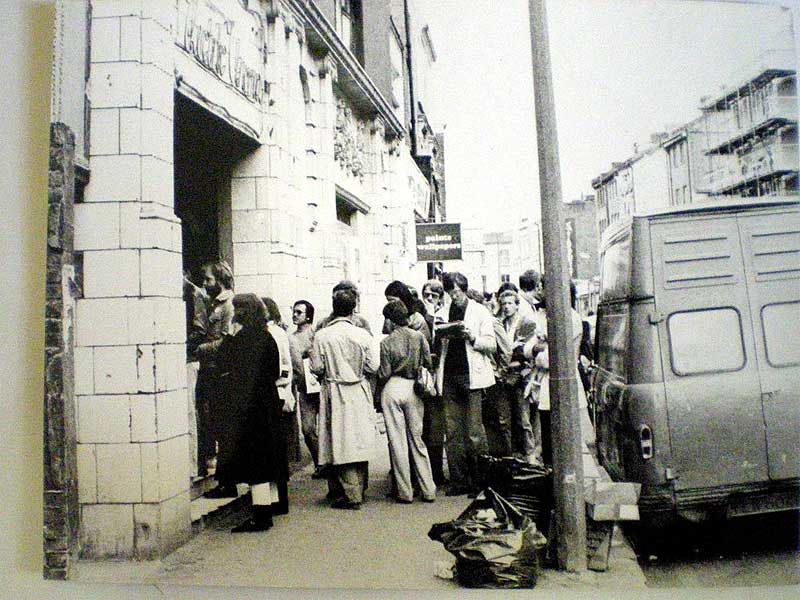
1911–1920’s
Designed by architect Gerald Seymour Valentin on the site of a timber yard, the Electric Cinema Theatre opened its doors on 27 February 1911, with 564 seats, for its first public screening, a twenty minute silent film of Henry VIII starring Sir Herbert Tree. This film has not been seen since and it is thought to have been lost to history, sadly. Other films that screened that year were DW Griffith’s The Burglar’s Mistake (1909), Cecil Hepworth’s Poor Luck Buys China (1911) and Edgar Wallace’s A Fish Story (1912). Amongst the feature films screened, the daily programme would also include a short documentary and the Pathe Animated Gazette.
In 1915, positive steps were taken, and plans submitted, to improve the ventilation system with more powerful electric fans. Despite this, the Electric has always had issues with the ventilation system, as our regular visitors will know! The cinema bravely shouldered the effects of the war and in 1919, the Electric Cinema Theatre changed hands. Under Harry Hyamson’s ownership, the Electric Cinema Theatre became the Imperial Playhouse and went on to screen the longer, more elaborate silent feature films of the 1920s…
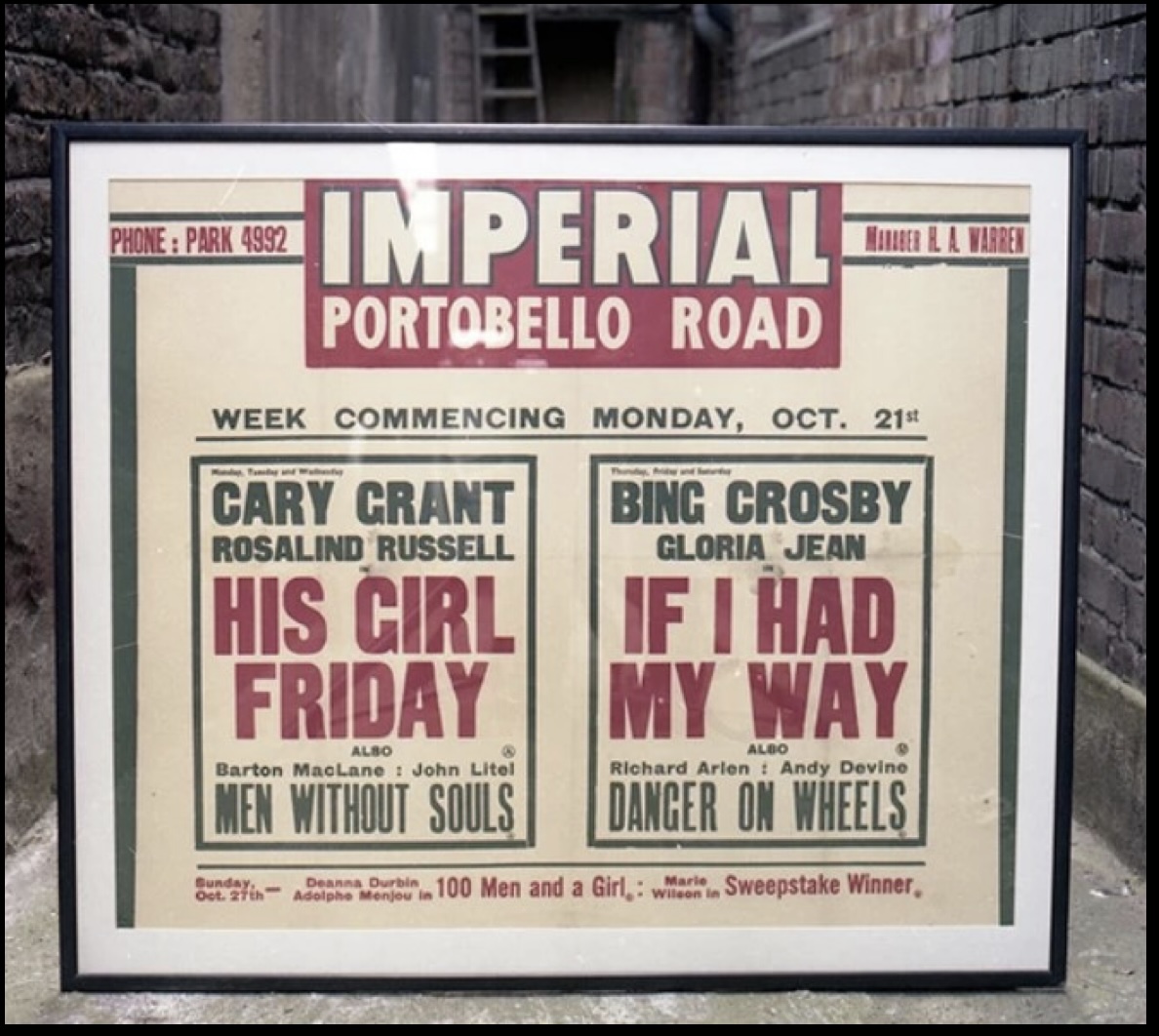
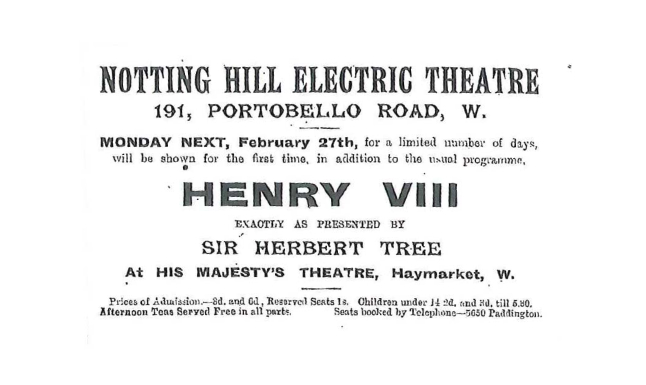
1950’s – 1960s
Despite the effects of the Second World War, the Imperial Playhouse, as the Electric Cinema was then known, enjoyed good attendances and box office receipts throughout the 1940s. England in the 50s saw Queen Elizabeth II come to the throne, the first Routemaster hit London streets and the first supermarket open, but there was a general decline in cinema audiences. Portobello Rd fell into disrepair and the Imperial Playhouse was fondly known as the local fleapit, somewhere for people to have a nap when the pubs shut after lunchtime.
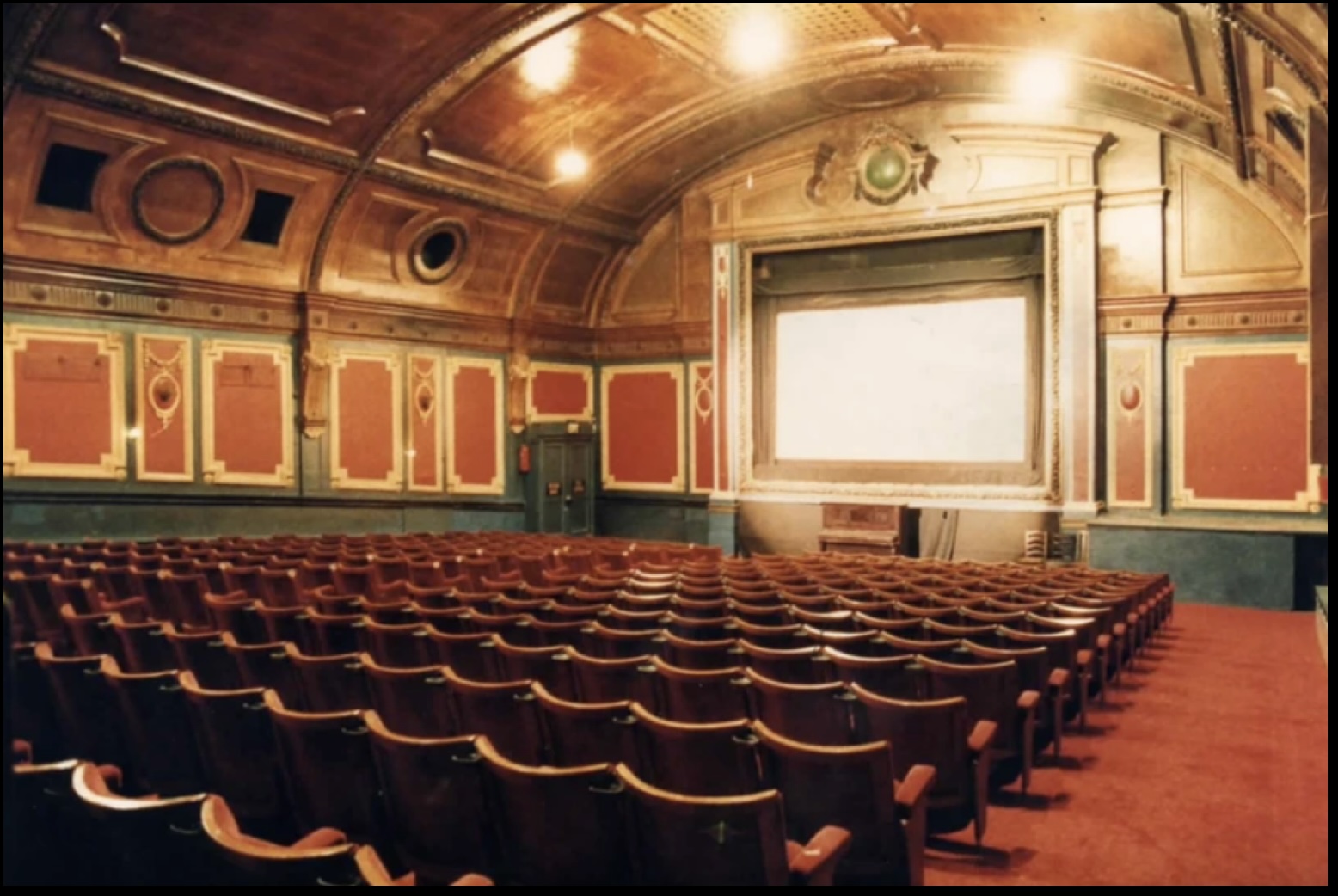
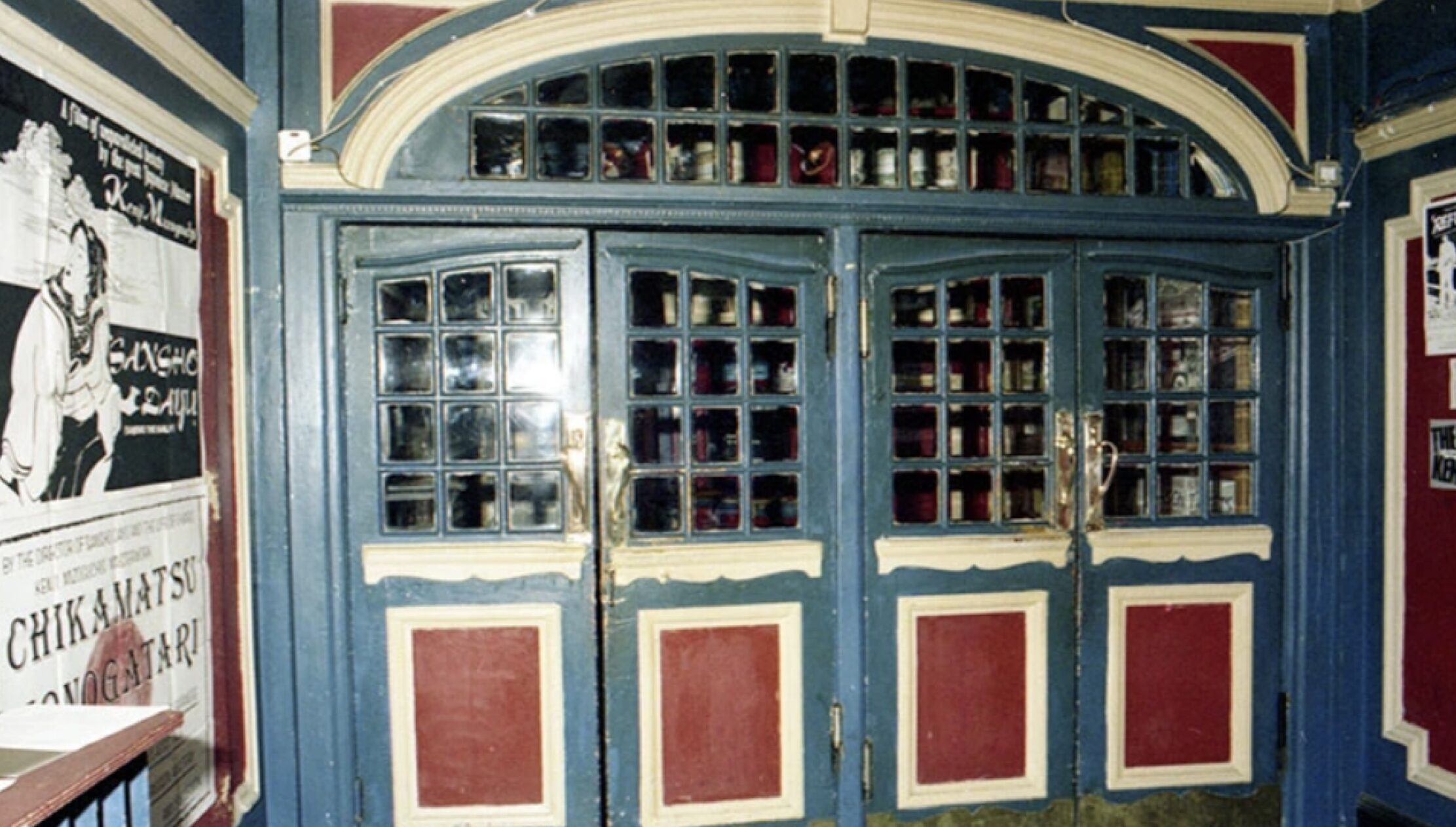
1970’s
By the late 1960s, the Electric’s reputation as the local flea-pit had firmly set in. A group of film enthusiasts, headed up by the venerable Peter Howden, took over the cinema on Friday and Saturday nights to host Electric Cinema Club nights. Their screenings were such a screaming success that the then owner asked the Electric Cinema Club to run the place full-time.
This kick-started a decade which set the Electric’s filmic past firmly in the history books – it was known worldwide for being west London’s answer to the NFT (National Film Theatre) screening films that no one else would dare to screen, rare films that wouldn’t necessarily be screened in the UK and all the classics and arthouse films that cinemas, contracted to play first run films, couldn’t or wouldn’t be daring enough to screen. It is this period that the Electric is most fondly remembered for.
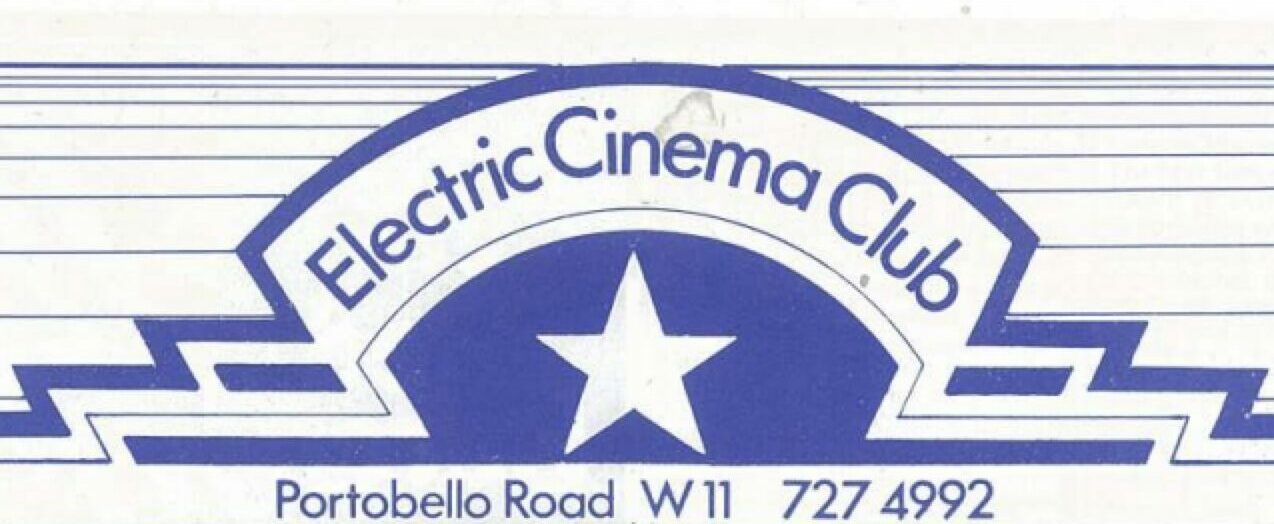
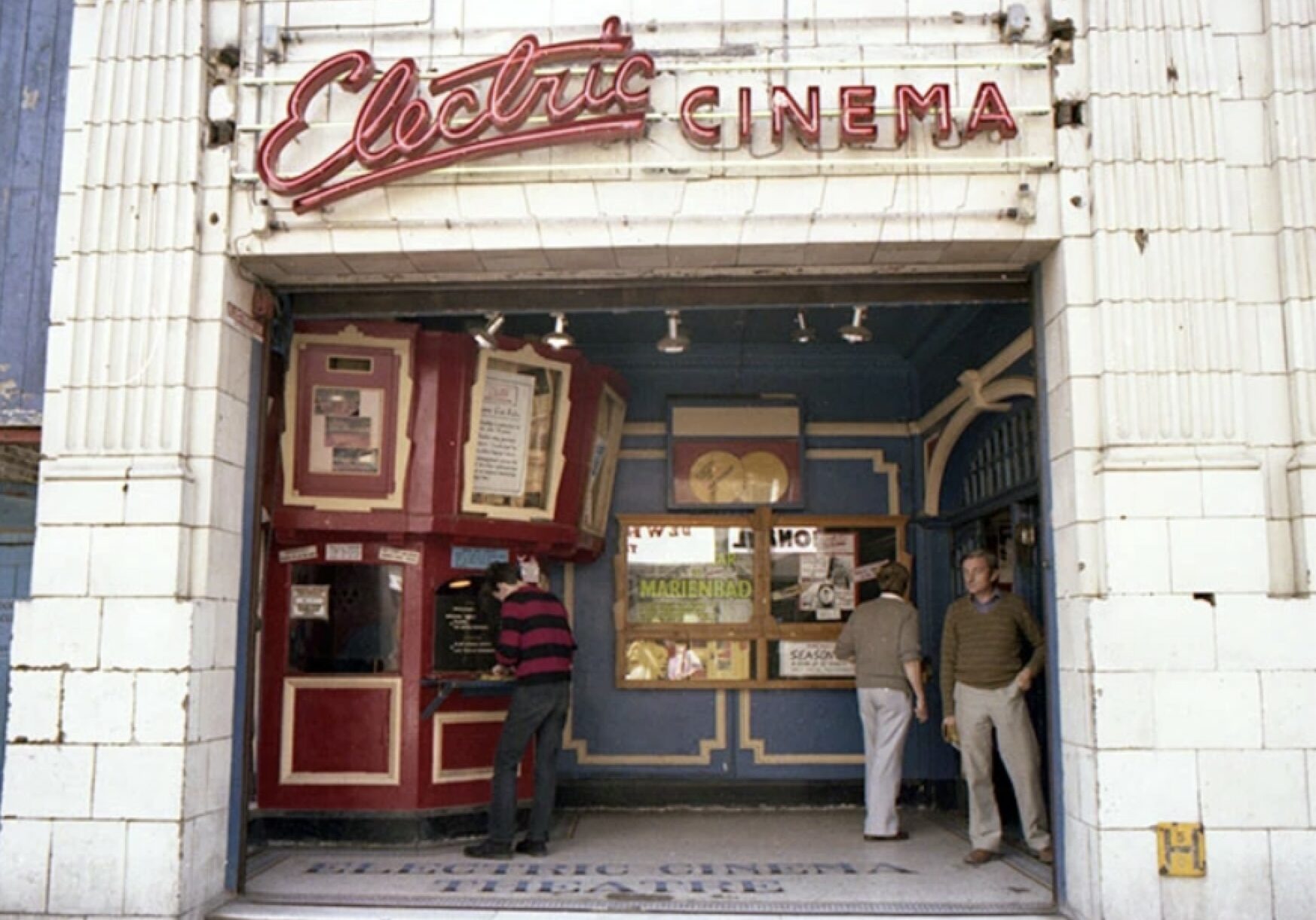
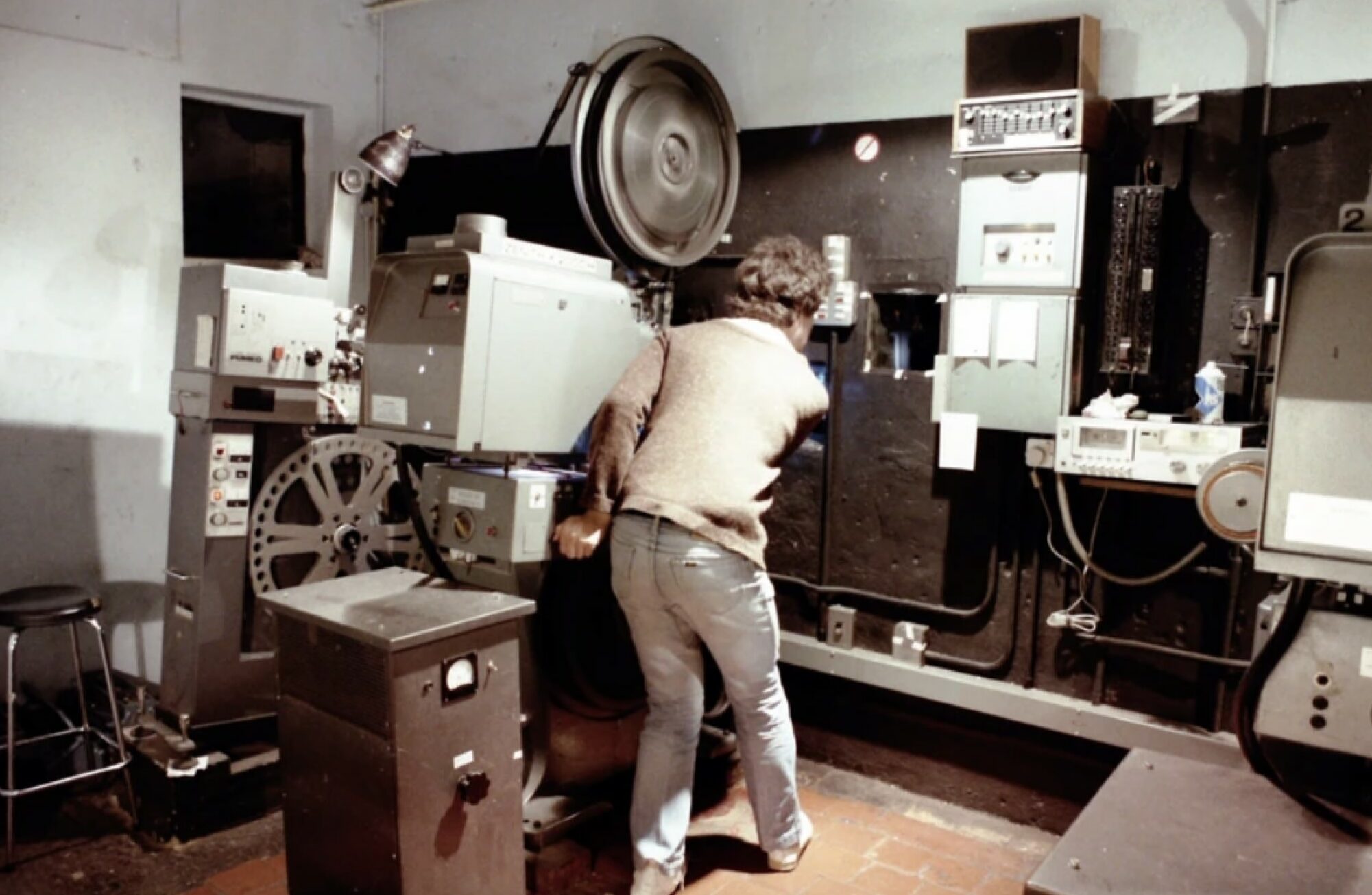
1980’s
The 1980s was a fairly turbulent time for the Electric Cinema as wave up on wave of changes hit Portobello Road’s affectionately-known “fleapit cinema”. In 1981 Peter Howden, whose cinematic expertise had given the Electric Cinema Club its distinctive style of programming – much loved by the local community and easily rivalling the NFT – moved on to the Everyman Cinema in Hampstead. In 1983, a staff cooperative proposal to continue running the cinema lost out to Mainline Cinemas, and on 31 October the Electric Cinema closed with a double bill screening of Powell & Pressburger’s The Red Shoes (shot in Notting Hill Gate) & Black Narcissus. As Derek Malcolm wrote in The Guardian in October 1983: “… Londoners have lost the best privately-managed repertory theatre in the business.” But not before a farewell party in true Electric Cinema Club style.
Five months later in March 1984, the cinema reopened as Electric Screen with a screening of The Life and Death of Colonel Blimp. New owner and programmer Romaine Hart, together with architects Fletcher Priest, oversaw the renovation of its interior, replacing the old wooden chairs with plush new seating, installing Dolby stereo sound, air conditioning and other comforts including a plush new screen and curtain. Rather than match Peter Howden’s programming style, Romaine elected to try a different approach, screening first-run features rather than a mixture of repertory titles, and premiering Mainline Cinema’s own theatrical release of This is Spinal Tap, peppered with numerous live music gigs like Spandau Ballet. But audience numbers dropped and eventually Mainline opted to sell the cinema on. Local residents and staff, in particular then-box office staff Karen Smith and Tom Heslop, formed the Campaign To Save The Electric Cinema. 10,000 people expressed their support and signed the petition to save London’s oldest purpose built cinema from redevelopment, also highlighting the wider issue of the role of developers in Notting Hill, something which is still prevalent today with the ‘Save Portobello Road’ campaign.
But despite their efforts and the support of local residents like Audrey Hepburn, Anthony Hopkins and Julie Christie, the cinema closed in May 1987. Over a year later, in November 1988, a meeting convened between the Kensington and Chelsea Town Council’s Planning Committee and the Electric’s new owners, property developers Wellingshire, whose intention was to redevelop the site as a bar and restaurant with a rising dance floor. This proposal was met with derision from the Save The Electric Cinema Campaign and local residents like Don Letts (Big Audio Dynamite) and the Mutoid Waste Company who said that:
“From the artistic point of view, the Electric already is a nucleus for Notting Hill. It always has been. We’ve got plenty of bars and restaurants. What we’ve only got one of is a 1910 cinema the whole community values. Don’t let those bastards take it away – please.”
… They didn’t take it away, but the doors remained closed until the early 1990’s.
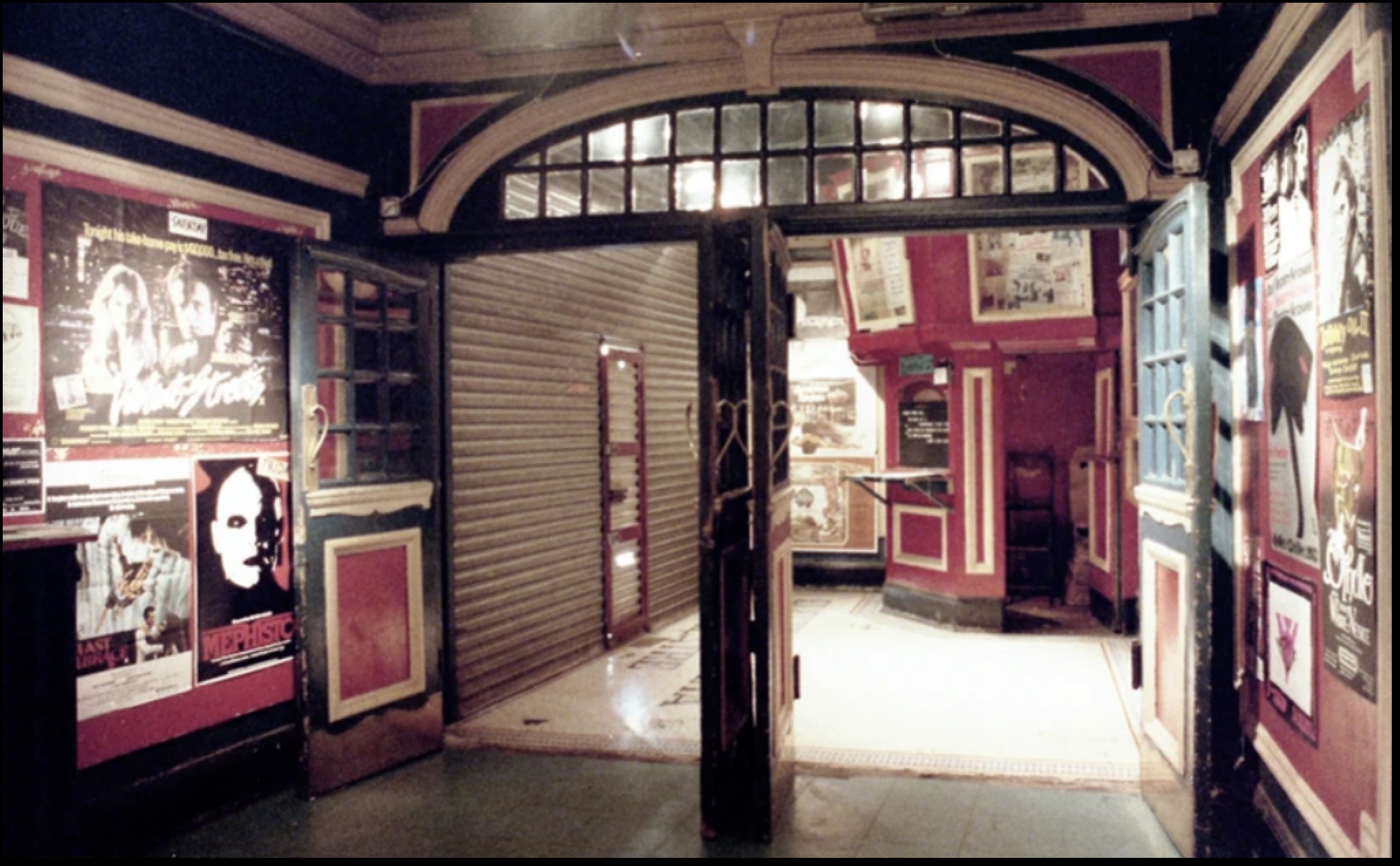
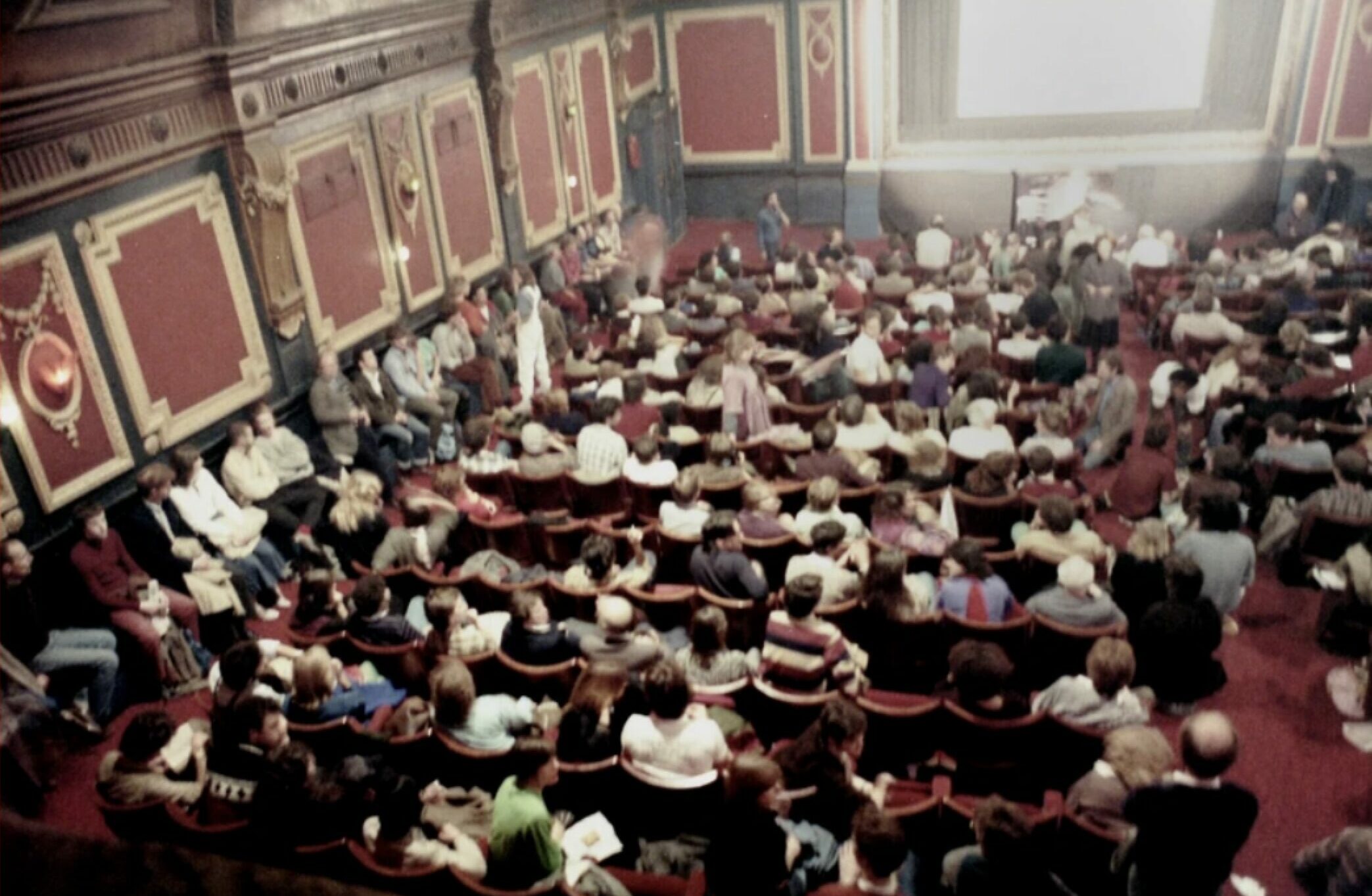
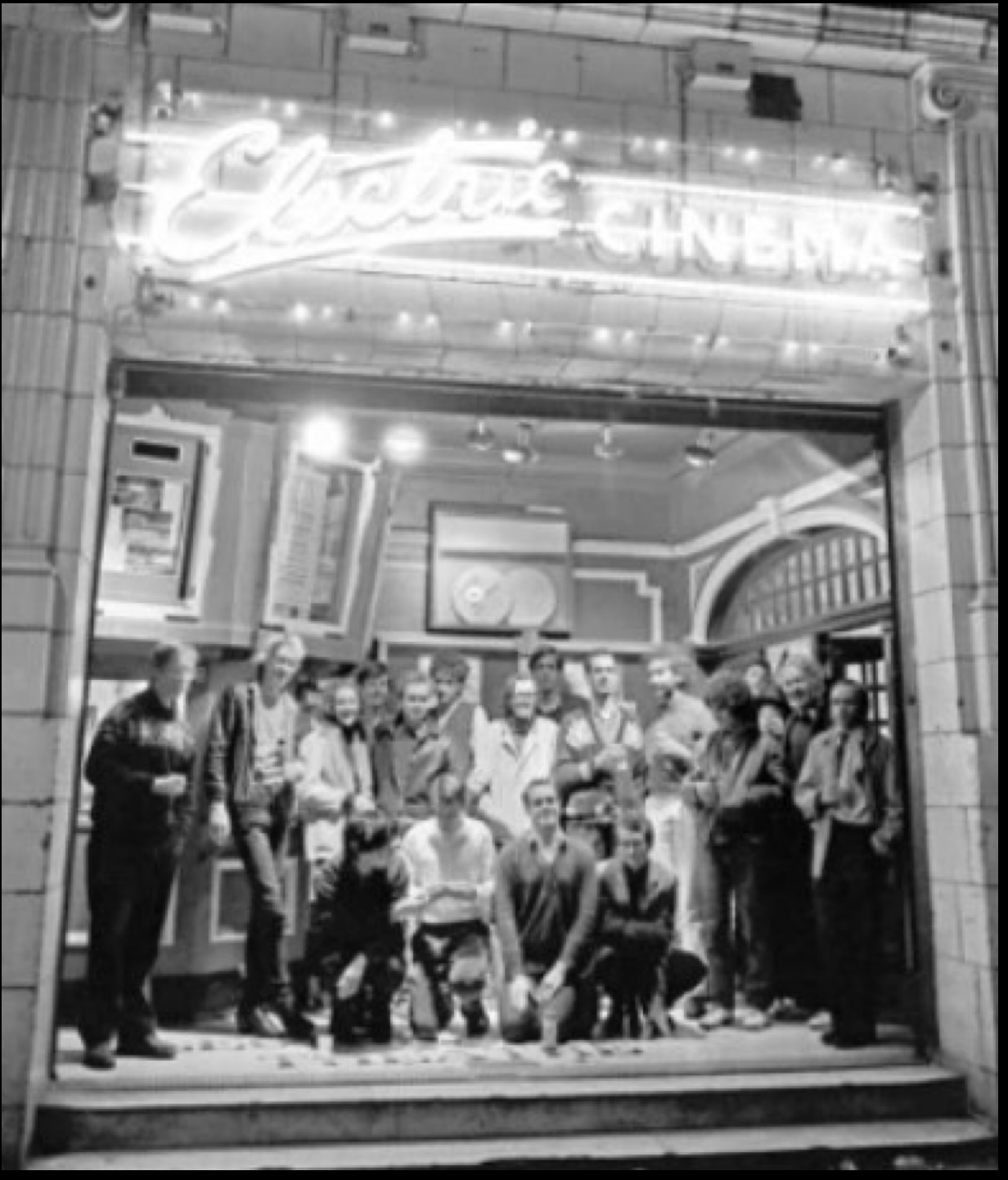
1990’s
Various reprieves came and went in the early 90s. Alison Davis recalls her husband Martin coming home, and announcing “I have bought a cinema!” to open, naturally, with Cinema Paradiso, as well as holding a splendid 40th birthday party for him in the auditorium.
Amid the flux, in 1992 Pedro Almodovar stumbled across a double bill of his work at the Electric. The Spanish auteur was spotted by the avid movie fans “in the company of a micro-skirted blonde of dubious gender”. Naturally, they demanded he introduce the screenings. Gamely, Almodovar took to the stage and rambled incoherently about the film and his love of London, apparently his second home, before announcing to a perplexed crowd: “I love New York!”
In 1993, The Electric Triangle Partners consortium came together to purchase the site. Consisting of Choice FM and The Voice newspaper, and led by Kwesi Owusu, Paul Bucknor and Mark Mantock, an investment of £1m aimed to turn it into a cultural hub for Black independent cinema in the UK.
Reopening in September 1993, the cinema became a cultural centre for Black cinema and programmed a wide array of first-run titles, as well as championing local talent from the community in Notting Hill.
Read more at:
https://www.bfi.org.uk/sight-and-sound/interviews/screen-scenes-revisited
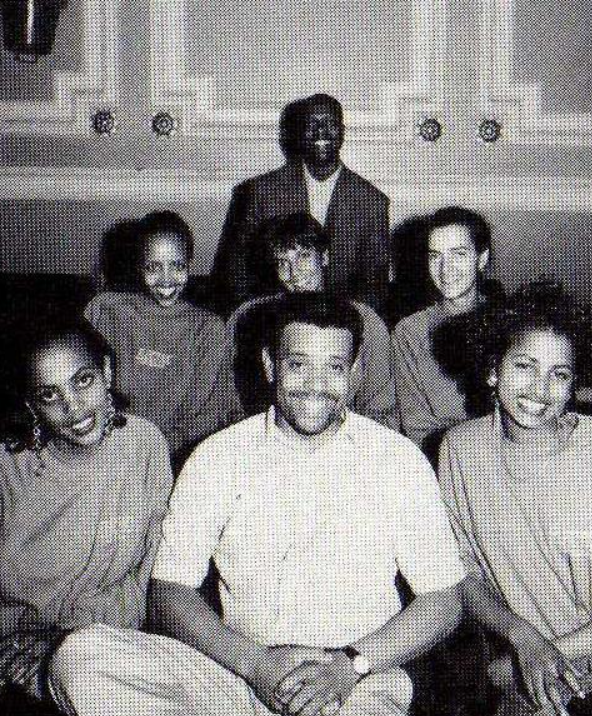
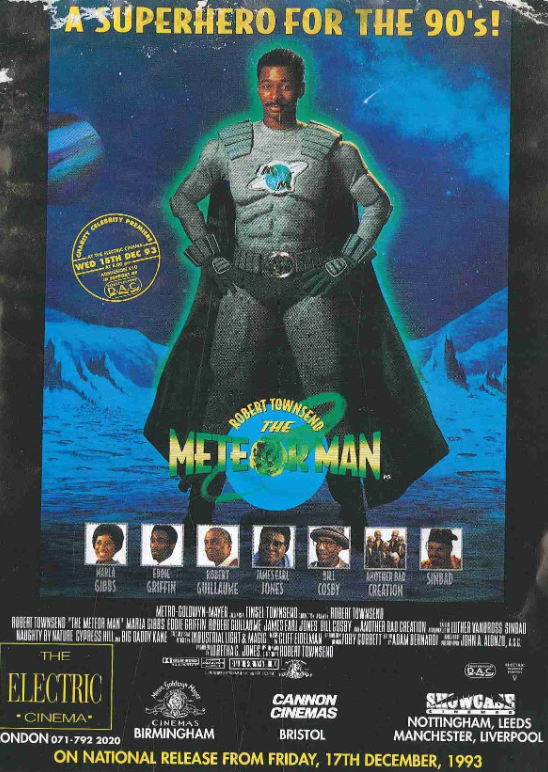
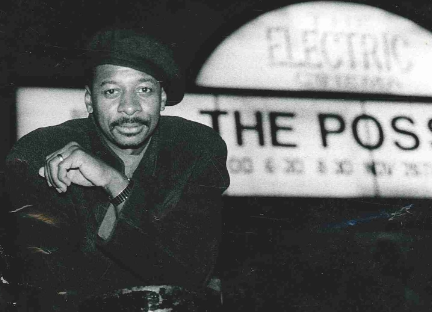
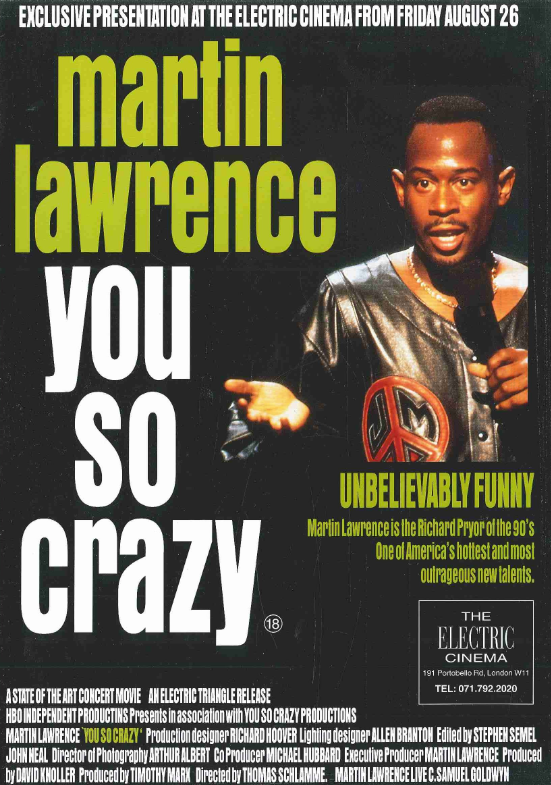
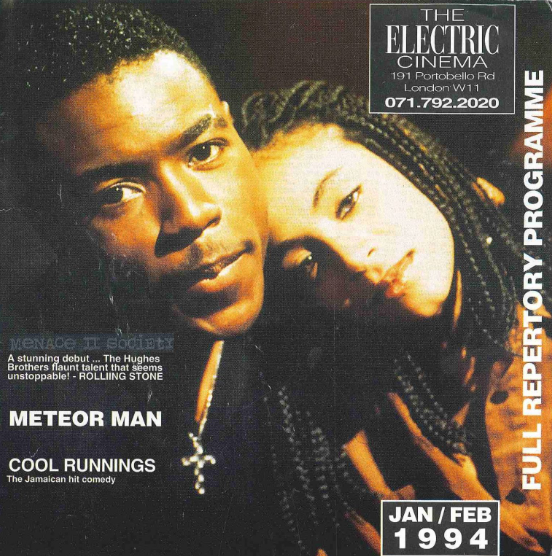
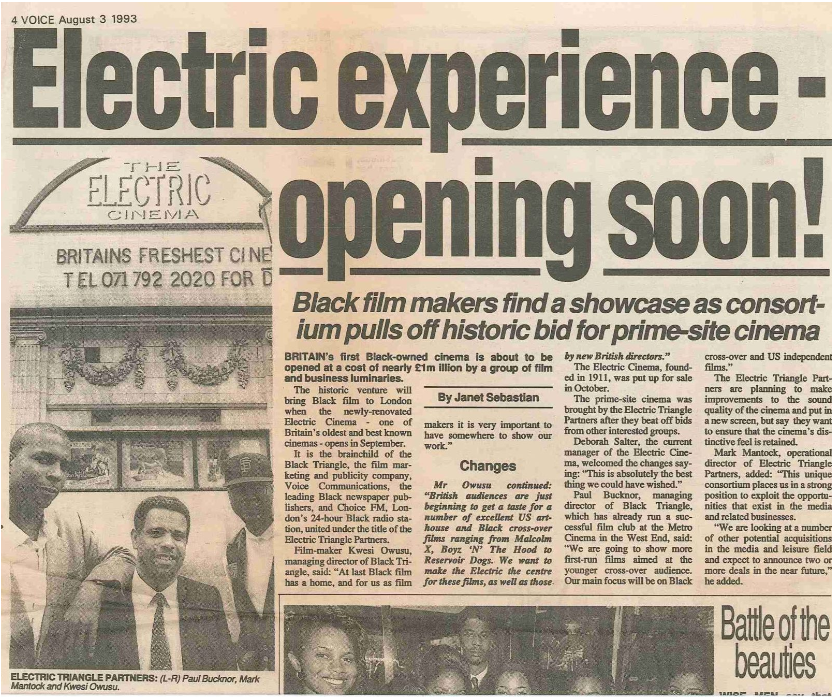
2000’s – present
After another period of closure the cinema reopened on April 22nd 2002 as the Electric Cinema, House and Brasserie, an offshoot and first public cinema of the Soho House Group. Taking programming style back to the Electric Screen days of the 80’s, the cinema planned to show first run features and opened with About A Boy. Therein the similarities end. The 240 seats were replaced with 98 leather armchairs, some with footstools, and two massive leather sofas at the back of the auditorium. A bar was installed in the cinema serving everything from cocktails to pints of lager to bottles of wine – and not a carton of popcorn in sight! Finally, a bespoke mechanical screen was installed that highlighted and preserved the beautiful proscenium arch and added a bit more pizzazz to the whole experience. Designed to be able to show any size of film, from widescreen to TV, the screen kicks off every show by extending beyond the arch and widening to whatever size is needed, right before the audience’s eyes…
Renovation works
Following the devasting fire that hit us in 2012, we replaced all of the seating once again – with the beautiful leather armchairs, sofas and beds that you see today – bringing our overall capacity to just 83 and we also refurbished all of the toilets and created an entrance to them inside to auditorium (just to the right of the screen!)
Our cinema now offers the latest digital 4K Laser projection and 7.1 surround sound – but has lost none of the history it has garnered over the years, and it’s something we are very proud of here at the Electric!
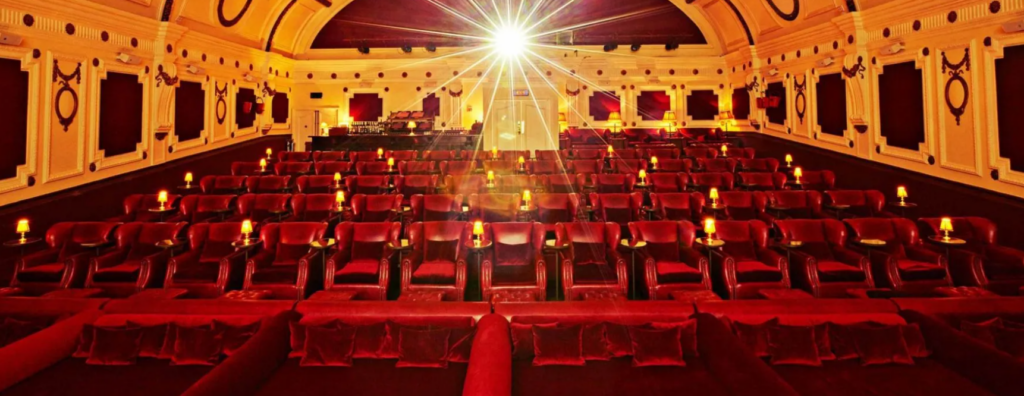
Here’s to the next century!
Thanks to our friends at electriccinemaclub.com for their wealth of historical knowledge – please pay them a visit to learn more about our illustrious history.

